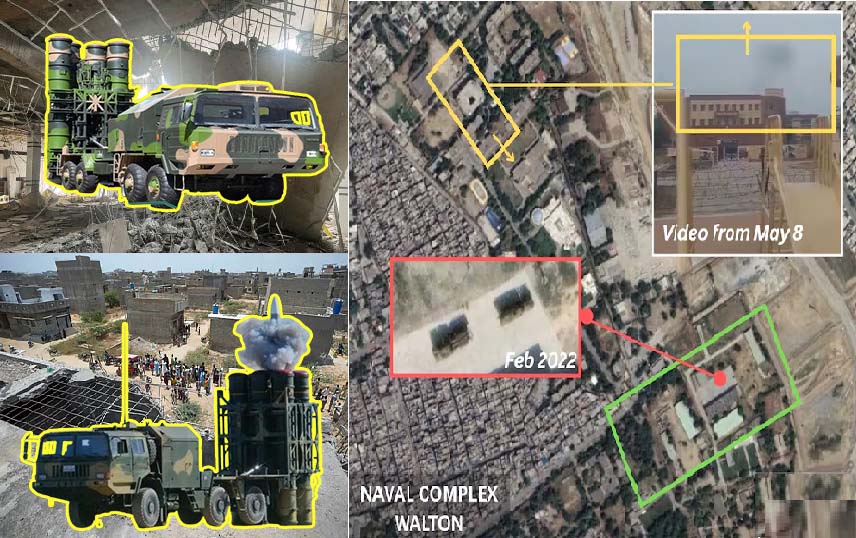
- Pakistan’s Air Defence has failed repeatedly: from the 2011 U.S. SEAL raid in Abbottabad to India’s 2019 Balakot strike and even a stray BrahMos missile entering Pakistan in 2022 – each time without detection or interception.
- The failure of the HQ-9 and LY-80 to detect incoming SCALPs points to a catastrophic breakdown in radar integration and response, be it due to poor coordination, outdated systems, compromised tech, or human error, the outcome was the same: a multi-billion-dollar defence grid neutralised in minutes.
- Operation Sindoor exposed the cracks in China’s image as a reliable military tech supplier and revealed Pakistan’s dependence on Chinese hardware as a strategic vulnerability, not strength.
- For India, it was a display of precision, training, and capability; for China and Pakistan, a stark and symbolic reckoning.
Before I begin writing this article, I must say this plainly: It is a shame and a disgrace that Pakistan continues to target civilians, as seen recently in the tragic attack in Poonch. There is no justification for such cowardice. They are, quite frankly, the incarnate of evil. It is time the world and especially India respond to this threat unapologetically and decisively. My condolences go out to the bereaved families whose loved ones were taken by this senseless violence. Their pain must not go unanswered.
In the early hours of Wednesday, a quiet but thunderous message echoed across South Asia, not just through the destruction it wrought, but in the silence it left behind. It wasn’t the explosions in Bahawalpur, Muridke, Muzaffarabad, or Kotli that made Operation Sindoor historic. It was what didn’t happen: not a single missile was intercepted. Not one.
This was more than a military operation. It was a strategic statement. A full-blown reality check for Pakistan’s defence establishment and a stinging embarrassment for its closest military supplier: China.
The Night of the Strike
At precisely coordinated intervals, Rafale jets of the Indian Air Force roared into the skies. Silent, swift, and deadly, they released SCALP cruise missiles– precision-guided munitions known for their stealth capabilities and terrain-hugging flight paths. These weren’t ordinary bombs; they were tools of surgical warfare, capable of striking from over 500 kilometres away. And they did. With devastating accuracy.
Nine terrorist camps, deep within Pakistani territory and Pakistan-Occupied Kashmir, were destroyed. But as satellite imagery and strategic analysts would soon highlight, the real casualty of the night was the myth of invincibility surrounding China’s air defence exports.
The Ghost Defence
Pakistan’s skies were, at least on paper, protected. The HQ-9 long-range surface-to-air missile system, modelled after Russia’s S-300, was meant to be the crown jewel of its aerial defence. Alongside it was the LY-80 (HQ-16), a medium-range counterpart, often showcased during military parades with pomp and ceremony.
But when it mattered most, they were silent. Blind. Useless.
Not one incoming missile was tracked. Not one was intercepted. The entire air defence apparatus, despite billions spent and years of strategic positioning, stood frozen as Indian missiles sliced through Pakistani airspace like ghosts in the night.
What makes this failure particularly damning isn’t just the operational lapse. It’s the fact that this wasn’t the first time such a lapse has occurred. In 2011, American SEALS flew into Abbottabad, killed Osama bin Laden, and flew out without a scratch. In 2019, Indian Mirage jets hit Balakot. In 2022, a stray Indian BrahMos missile accidentally flew 120 km into Pakistan, and nothing happened. No detection. No interception.
With Operation Sindoor, the pattern has become undeniable.
High-Tech, Low Trust
Beijing has long marketed its defence exports as cutting-edge alternatives to Western systems. The HQ-9, in particular, has been sold to countries like Pakistan and Turkmenistan as a viable competitor to the American Patriot and the Russian S-300. But battlefield performance tells a different story.
The inability of the HQ-9 and LY-80 to even detect the incoming SCALPs suggests a catastrophic failure in radar integration and real-time response capability. Whether it was poor coordination, outdated software, compromised electronics, or simple operator error, the result is the same: a multi-billion-dollar defence grid was rendered obsolete in minutes.
And Indian forces made it worse for them, by design.
Electronic warfare techniques, including radar jamming, decoy drones, and signal suppression, were reportedly employed to create confusion in the enemy grid. These tactics aren’t new, but their seamless execution during this operation highlights India’s growing edge in digital combat and battlefield innovation.
The Bigger Picture: A Symbolic Victory
India didn’t just strike targets; it dismantled illusions. For years, China has projected itself as a global military tech supplier, feeding weapons systems to nations looking to reduce Western dependence. But Operation Sindoor exposed a fault line in that ambition.
Pakistan’s overreliance on Chinese hardware now seems less like a strategic partnership and more like a liability. The symbolic implications are huge. For India, this was more than a counterterrorism operation, it was a showcase of capability, precision, and superior training. For China and Pakistan, it was a moment of painful reckoning.
Looking Ahead
Military experts are now scrambling to analyse how such an extensive air defence grid failed so completely. Was it a lapse in readiness? Or is it, as some suggest, an inherent weakness in China’s export-grade systems, designed more for show than real battle?
Regardless of the answers, one thing is clear: the credibility of Chinese military technology has taken a direct hit.
And in the geopolitical theatre of South Asia, credibility is everything.
References:
- “How Scalp Missiles May Have Exposed Cracks in China’s Shield over Pakistan – Business Today, May 7, 2025. https://www.businesstoday.in/india/story/how-scalp-missiles-may-have-exposed-cracks-in-chinas-missile-shield-over-pakistan-operation-sindoor-475124-2025-05-07.
- “Operation Sindoor: Have Chinese Air-Defence Systems Failed Pakistan yet Again?” Moneycontrol, May 7, 2025. https://www.moneycontrol.com/news/india/operation-sindoor-have-chinese-air-defence-systems-failed-pakistan-yet-again-13016534.html#google_vignette.
Prajwal K M holds a Master’s in Diplomacy, Law, and Business with a specialization in Economics and Foreign Policy. He is currently a consultant at the Nation First Policy Research Centre (NFPRC), a Delhi-based think tank working on policy design and implementation with the government. Formerly Deputy Editor at SamvadaWorld, his work focuses on the political and economic landscapes of West Asia and North Africa.
